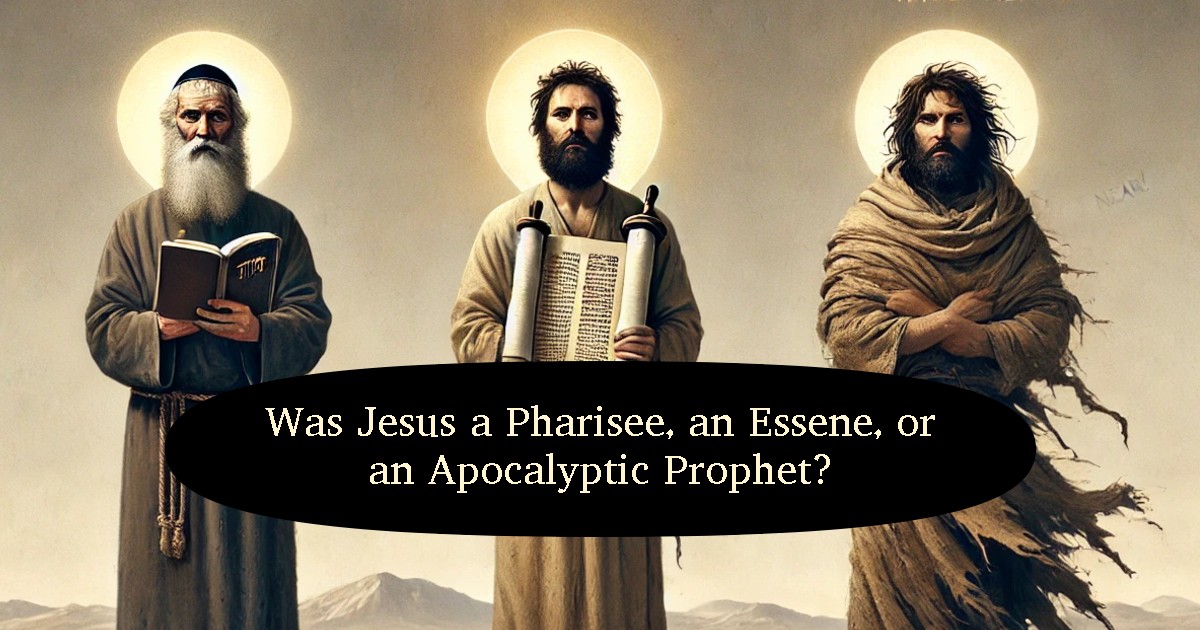Jesus in the Context of First-Century Judaism
Was Jesus an outsider who introduced a radical new faith, or was he part of an existing Jewish movement? The earliest sources suggest that Jesus’ teachings aligned closely with established sects of his time. The Pharisees, Essenes, and apocalyptic prophets all played significant roles in the religious landscape of first-century Judea, and Jesus’ teachings reflect elements of each. By examining the historical and textual evidence, we can explore which of these groups may have influenced Jesus the most.
Jesus and the Pharisees: A Shared Tradition
The Pharisees were one of the most influential Jewish sects of the time, known for their deep commitment to the Torah and oral tradition. They believed in resurrection, divine judgment, and strict adherence to Jewish law. The Gospels often depict Jesus in conflict with the Pharisees, portraying them as hypocrites. However, many of Jesus’ teachings closely align with Pharisaic doctrine.
Jesus, like the Pharisees, believed in the resurrection of the dead (Mark 12:18-27) and upheld the authority of the Torah. In the Sermon on the Mount (Matthew 5-7), Jesus interprets the Law in a way that mirrors Pharisaic debates of the time. He emphasizes prayer, fasting, and almsgiving, all central tenets of Pharisaic practice. In Matthew 23:3, Jesus even instructs his followers to follow the teachings of the Pharisees, though he condemns their hypocrisy.
Perhaps most revealing is the role of Gamaliel, a leading Pharisee, who defended Jesus’ followers in Acts 5:34-39. His argument that if the Christian movement were not from God, it would fail, suggests that not all Pharisees viewed Jesus as a heretic. The strong similarities between Jesus’ teachings and Pharisaic thought raise the question of whether Jesus was, in fact, a Pharisee himself, later rebranded by early Christians seeking to distance themselves from Judaism.
Jesus and the Essenes: A Radical Alternative
The Essenes were a separatist Jewish sect, known for their apocalyptic worldview and strict communal lifestyle. They lived in isolated communities, rejected material wealth, and anticipated a divine intervention that would establish God’s rule on earth. The discovery of the Dead Sea Scrolls at Qumran has provided invaluable insight into their beliefs, and many scholars have noted their similarities with Jesus’ teachings.
Like the Essenes, Jesus and his followers lived a communal lifestyle, relying on shared resources (Luke 12:33-34; Acts 2:44-45). Both Jesus and the Essenes emphasized a coming judgment, referring to the “Son of Man” as a messianic figure (Mark 14:62). The Essenes practiced baptism as a ritual purification, a practice reflected in John the Baptist’s ministry and Jesus’ own baptism (Mark 1:4-9).
The Dead Sea Scrolls refer to a figure known as the “Teacher of Righteousness,” a messianic leader who was opposed by corrupt priests in Jerusalem. Some scholars speculate that this figure may have influenced the way Jesus’ role was later understood. The apocalyptic warnings in Jesus’ preaching, his call to reject wealth, and his emphasis on an imminent kingdom of God bear striking resemblance to Essene beliefs. However, Jesus’ outreach to sinners and non-Jews was at odds with the Essenes’ strict separatism, making it unlikely that he was an Essene himself, though he may have been influenced by their teachings.
Jesus as an Apocalyptic Prophet
The first century was a period of political unrest, Roman occupation, and widespread belief that divine intervention was imminent. Apocalyptic prophets were not uncommon during this time, and many figures arose claiming to be messianic leaders or heralds of God’s coming kingdom. Jesus fits squarely into this tradition.
Jesus began his ministry by proclaiming, “The time is fulfilled, and the kingdom of God is at hand; repent and believe in the gospel” (Mark 1:15). This message was echoed by other apocalyptic figures of the time, such as John the Baptist, who warned of a coming judgment. The historian Josephus records several other apocalyptic leaders, including Theudas, an Egyptian prophet, and various others who predicted divine deliverance from Roman rule.
The Gospel accounts indicate that Jesus expected the end of the world within his own generation. In Mark 13:30, he tells his followers, “Truly, I say to you, this generation will not pass away until all these things take place.” Similar statements appear throughout the New Testament, suggesting that Jesus, like many of his contemporaries, believed that God’s intervention was imminent.
Why Did Christianity Distance Itself from These Sects?
If Jesus shared so many beliefs with the Pharisees, Essenes, and apocalyptic prophets, why did Christianity ultimately reject these connections? The answer lies in the evolution of early Christian theology and its need to appeal to a broader audience.
The Gospel writers, working decades after Jesus’ death, sought to define Jesus as a figure distinct from the Jewish sectarian disputes of his time. By portraying the Pharisees as legalistic hypocrites, early Christians reinforced the idea that Jesus was bringing a new covenant, rather than working within Pharisaic tradition. The Essenes, with their strict separatism, were incompatible with Christianity’s later mission to convert Gentiles. The failure of Jesus’ apocalyptic predictions forced early Christians to reinterpret his message, shifting from an immediate expectation of God’s kingdom to a more spiritualized concept of salvation.
The historical evidence suggests that Jesus was not a completely unique figure but was deeply influenced by existing Jewish movements. His teachings align with Pharisaic thought, share apocalyptic elements with the Essenes, and reflect the broader trend of Jewish prophetic tradition. Rather than creating a wholly new religion, Jesus may have been part of a continuum of Jewish thought that was later reshaped by his followers into something entirely different.
Sources
Bart Ehrman, Jesus: Apocalyptic Prophet of the New Millennium
E.P. Sanders, The Historical Figure of Jesus
The Dead Sea Scrolls, translated by Geza Vermes
Josephus, The Jewish War
The Gospel of Thomas, translated by Marvin Meyer

